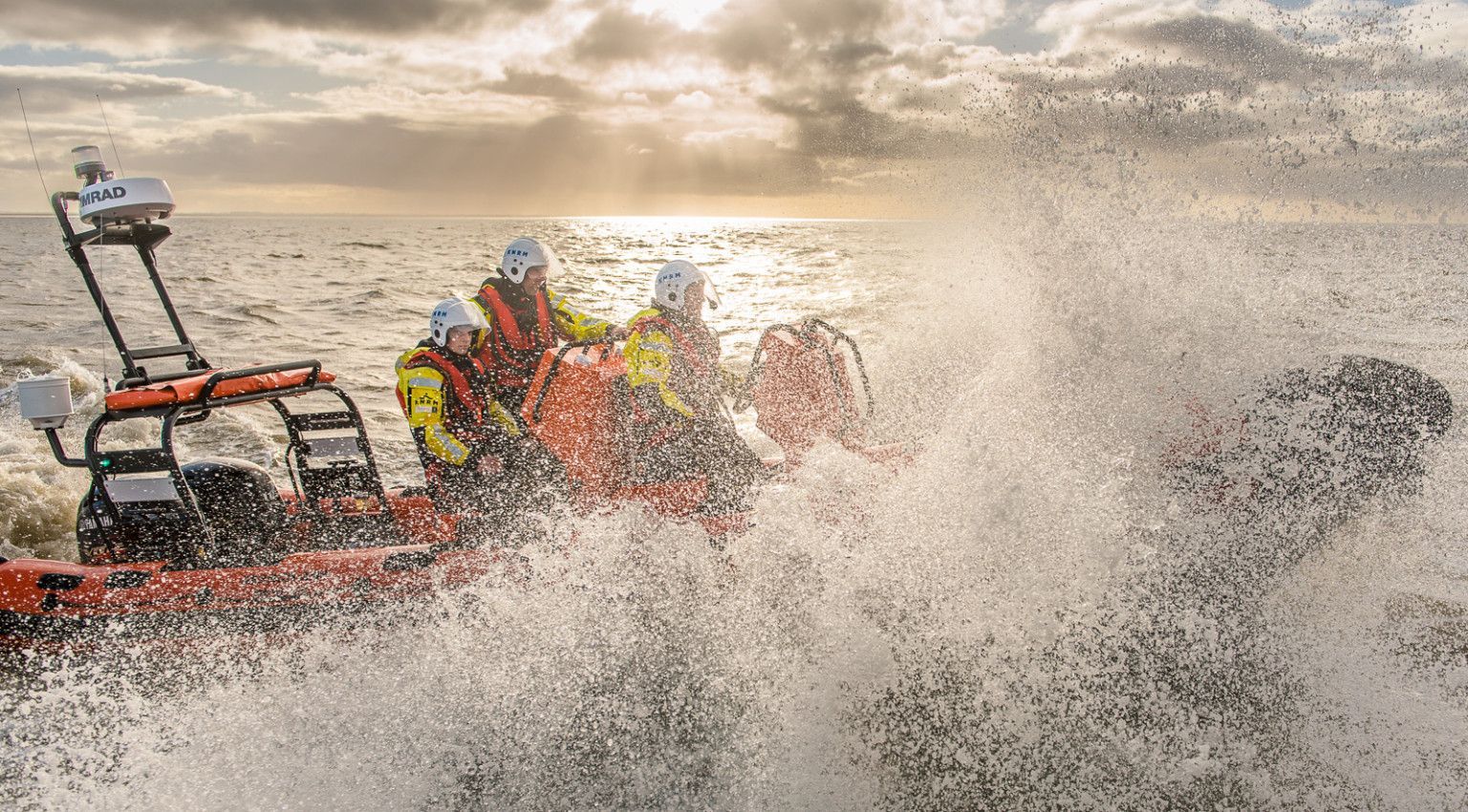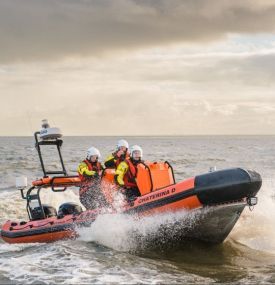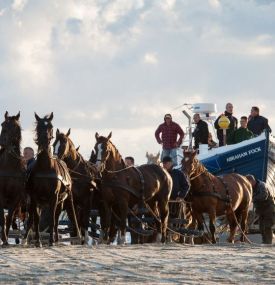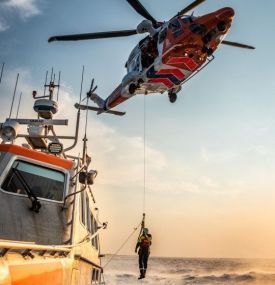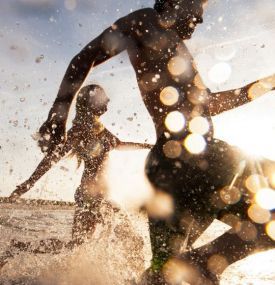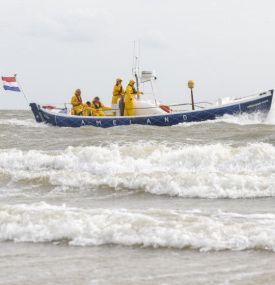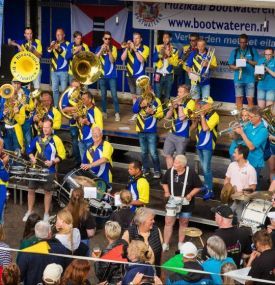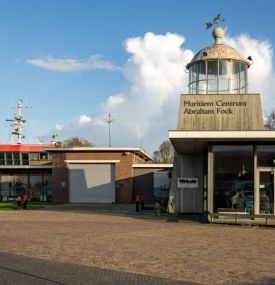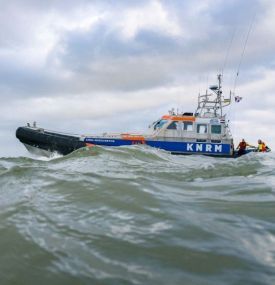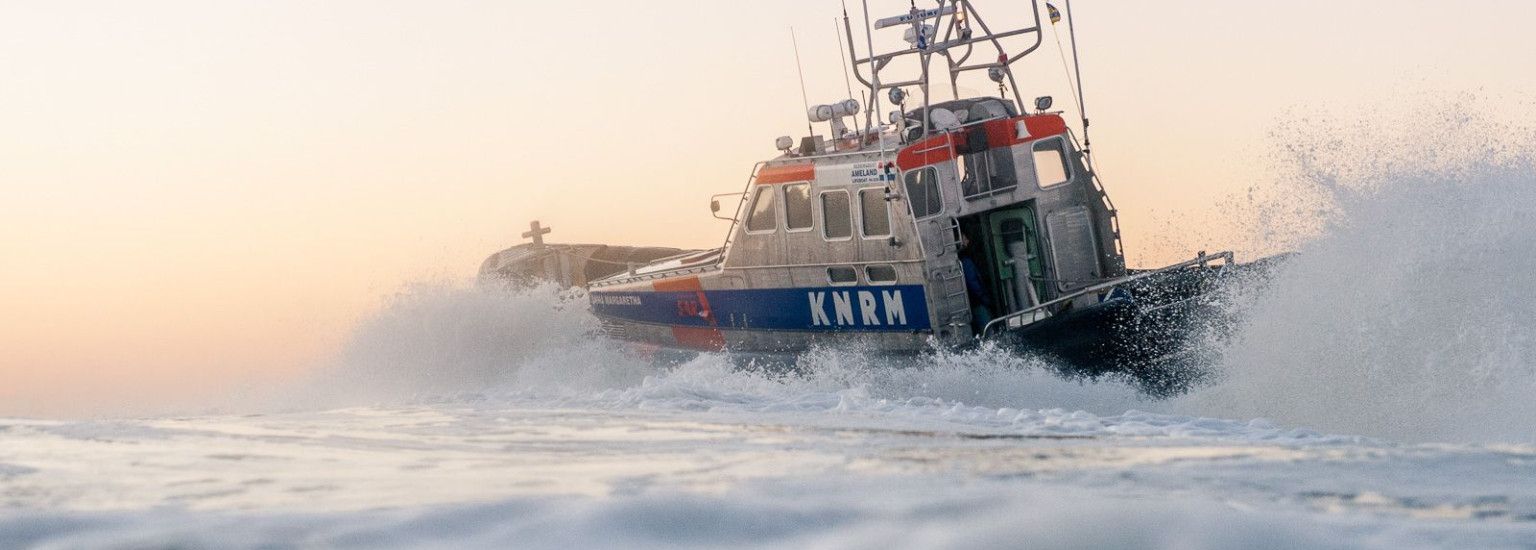
KNRM
Rescuing and preventing casualties at sea and the spacious inland water, that is the core task of KNRM.
Sailor in distress? Surfer missing? Sailing yacht with broken mast due to strong winds? KNRM's rescuers and lifeboats are on standby 24 hours a day to rescue people in any weather. But also on the beach and in the dunes, KNRM's coastal vehicles help in hard-to-reach places.
KNRM | Royal Dutch Rescue Society
The Royal Dutch Rescue Society (KNRM) was founded in 1824. KNRM's mission is to rescue, assist and prevent casualties at sea and on the wide inland waterways, 24/7 and under all circumstances. These may be water sportsmen, but also victims in commercial shipping and from offshore activities.
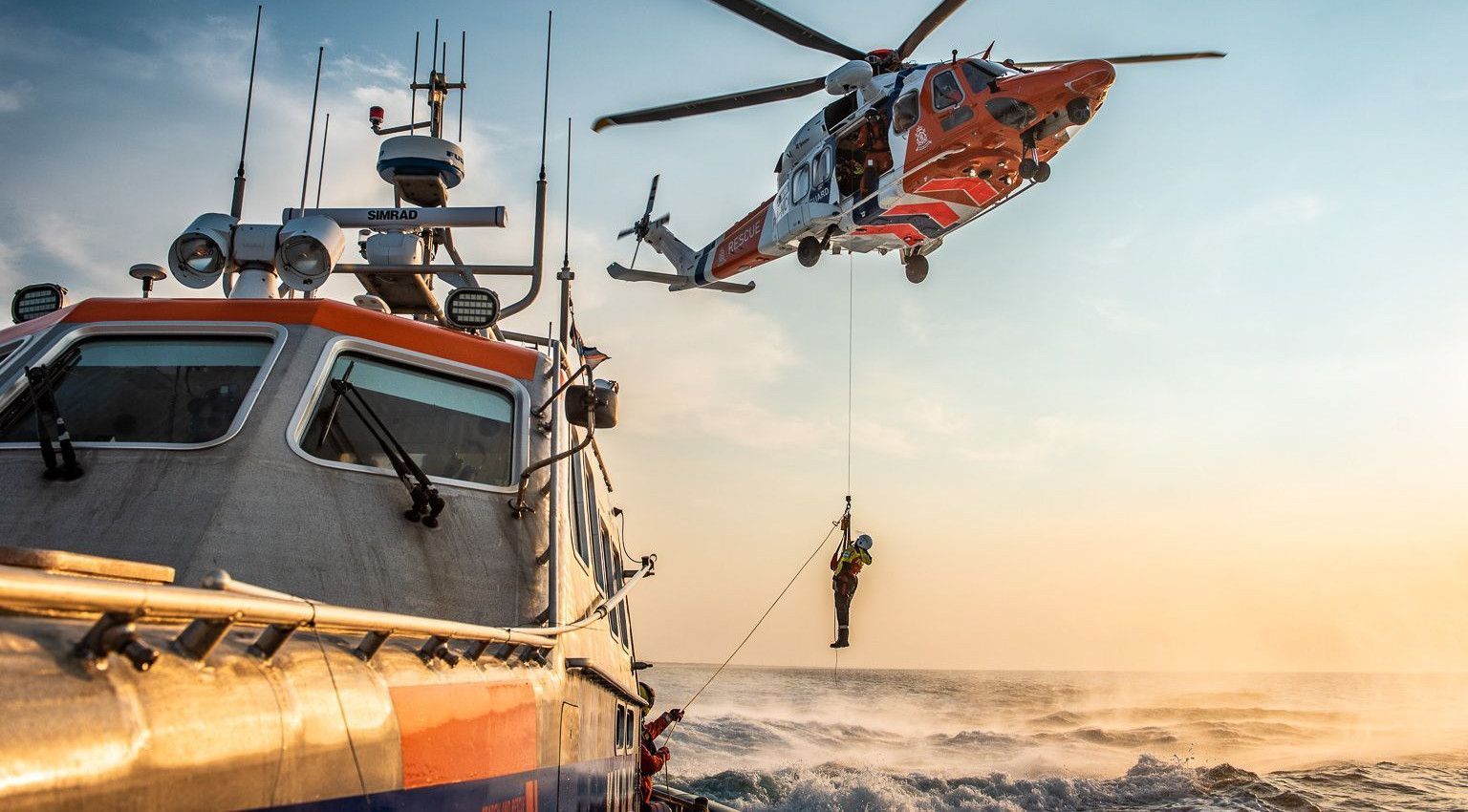
KNRM on Ameland
KNRM lifeguards are also active on Ameland. During the summer months, KNRM Lifeguards monitor the sea and the beach on a daily basis.
In addition to the lifeguards, there are also two KNRM rescue stations on Ameland, one in Nes and one in Ballum. KNRM rescue station Nes and KNRM rescue station Ballum are on standby 24 hours a day to help and rescue people on the water. In case of emergency, call the emergency numbers. KNRM volunteers offer free help, made possible by donors. Since 1824, their contributions have kept KNRM afloat.
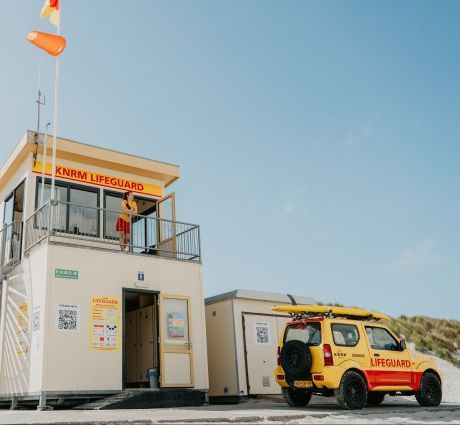
KNRM Lifeguards
-
During the summer months, KNRM lifeguards on Ameland supervise the sea and the beach on a daily basis. KNRM lifeguards are deployed to give beach visitors a fun and, above all, safe day at the beach. They do this by supervising, informing, preventing dangerous situations as much as possible and carrying out rescue operations when people get into trouble.
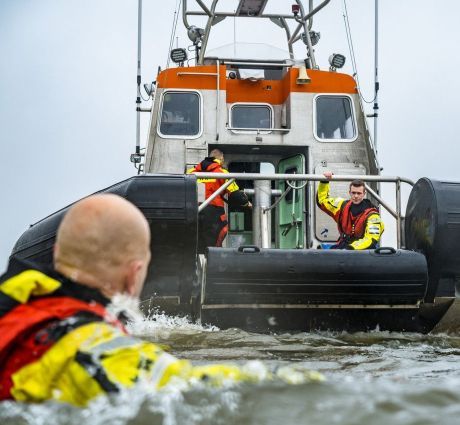
Rescue stations
-
In the past, the lifeboat was pulled into the sea by horses, something that is still a tourist attraction on the island. Nowadays, two modern lifeboats are stationed there.
At KNRM rescue station Ameland-Ballum, the Anna Margaretha - the larger of the island's two lifeboats - is always in the water, ready to leave.
At Nes rescue station is the Maria Hofker.
KNRM skipper Willard's story
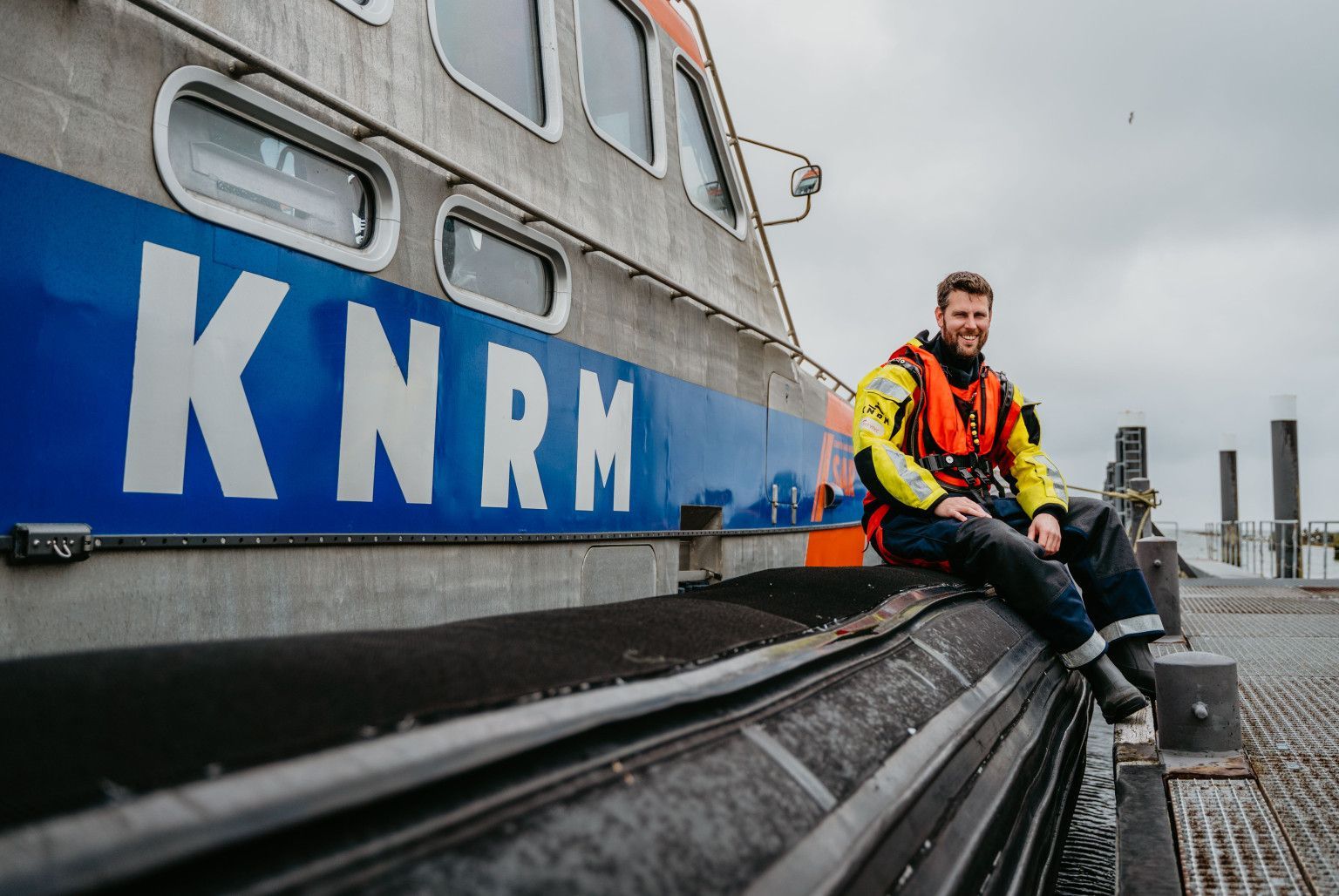
‘"In case of an alert, we leave within ten minutes, because on the water a small problem can quickly become a big problem.’
Willard (33) is one of KNRM's eight professional skippers in the Netherlands. Together with all the volunteers - one deputy skipper and 12 boarders - he rescues people and animals in distress at sea or on the mud flats. 365 days a year, 24 hours a day and in all weather conditions, they are ready when called.
KNRM and Ameland
KNRM and Ameland have a long history together, dating back as much as 200 years, at the same time as KNRM was founded. A ship with Ameland crew was even behind the founding of KNRM.

Frigate De Vreede
Many Amelanders sailed on the frigate De Vreede, which ran aground near Huisduinen in North Holland on 14 October 1824.
The ship had previously sailed under the name De Liefde (Love) for the Dutch East India Company and at the time of the grounding was owned by Cornelis Jansz.de Boer from Hollum, born in 1766. He was also the skipper during the fatal voyage and did not survive the shipwreck.
Photo: The beaching of the ship De Vreede - Collection Het Scheepvaartsmuseum
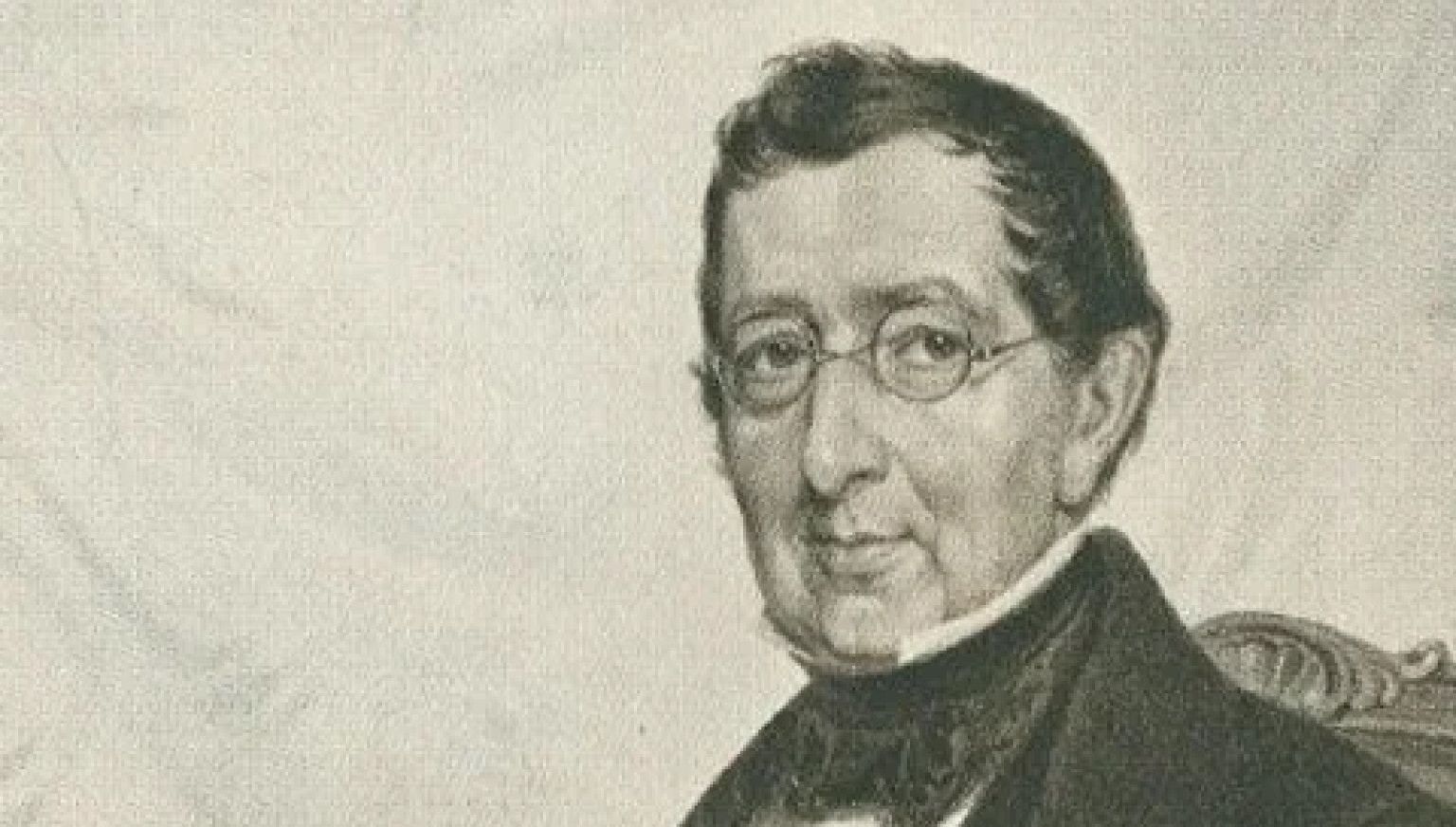
Beginning of organised rescue
The disaster of the Amelander ship De Vreede prompted the organisation of the lifeboat service.
Abraham Fock, namesake of the Maritime Centre in Hollum, was one of the initiators.
In 1824, he co-founded the Noord- en Zuid-Hollandsche Redding Maatschappij (NZHRM). He was also chairman of the rescue society for many years.
200 years of rescuers at sea
Land of water
On 11 November 2024, the Royal Dutch Rescue Society (KNRM) will celebrate its 200th anniversary.
Much has changed in 200 years: from rowing lifeboats to fast motorboats, and from cork lifejackets to special survival suits. What has not changed is that KNRM staff still work voluntarily and for free.
We commemorate the rescuers who gave their lives and look to the future. The theme for 200 years of KNRM is ‘surrounded by the past, moving towards the future.’
The history of the Amelander rescue system
Shortly after the Redding Society was founded on 11 November 1824, Ameland was provided with an open, unsinkable Greenland rowing boat. This boat was stored in a shed in Nes and carried out its first successful rescue on 6 February 1825.
Those in need are saved
Alarm/emergency calls:
By phone via:
- Coastguard Centre: 0900-0111
- Control room: 112
Via VHF radio:
- VHF channel 16
Via KNRM Emergency Centre:
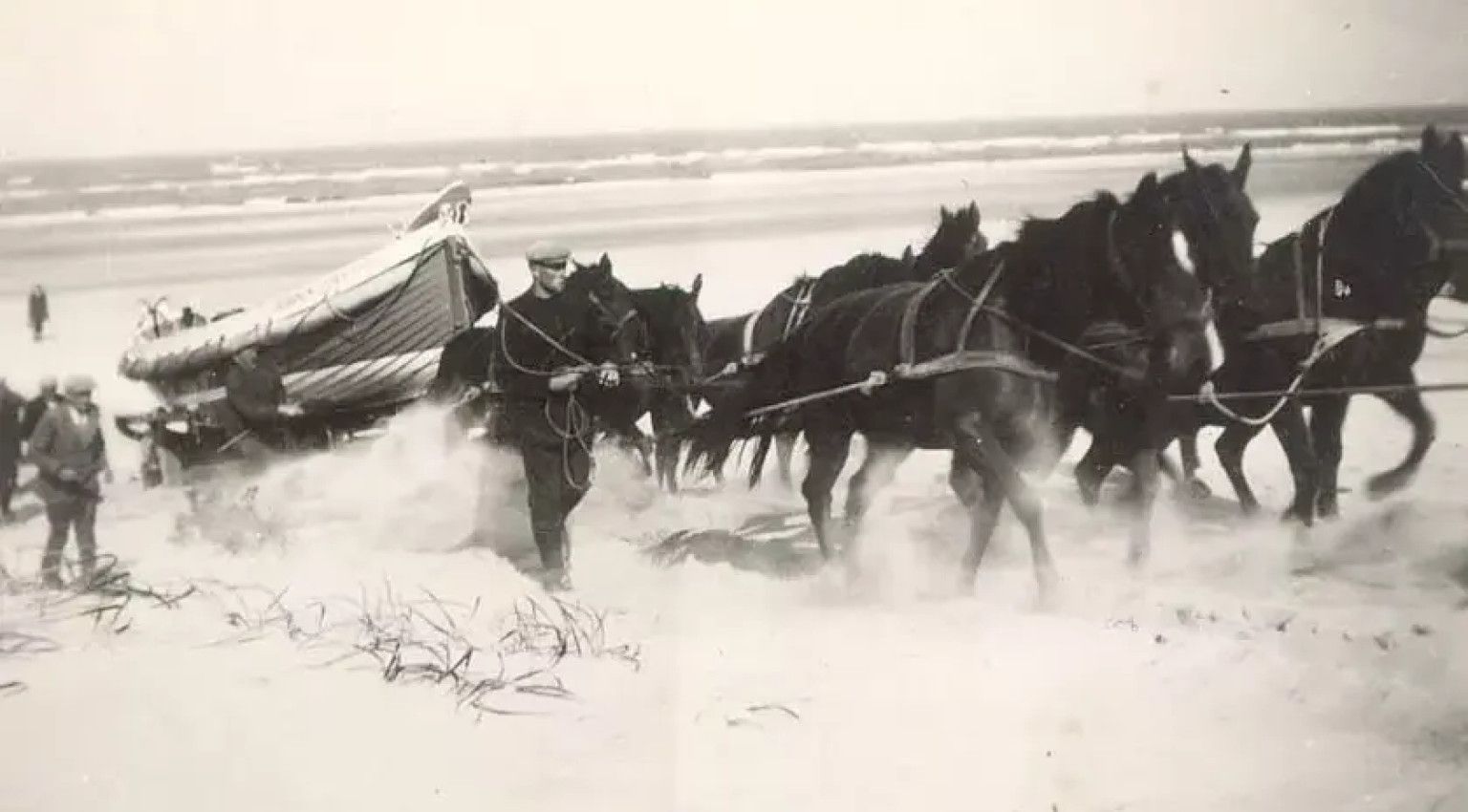
Rescuers on sea cycling route
During this cycle route, you will discover the history of KNRM on Ameland. You start at the rescue station in Nes and follow the Wadden dike to the Ballumerbocht, where you can see historic rescue ships. You then cycle to Hollum, where you might attend a horse-drawn lifeboat demonstration. A beautiful path through the dunes will bring you back to lively Nes.
New boathouse for KNRM Ameland
Help build a new rescue station on Ameland
The rescuers on Ameland would like to merge the two rescue stations into one: KNRM Ameland. This has many advantages, such as 24-hour availability, which can thus be permanently guaranteed. The new rescue station not only provides a place for the equipment and the volunteers, but also for exercises, training and rescue operations.
It is a place where rescued people can recover and where rescuers come together after intense actions. In short, an indispensable second home for KNRM'ers.
To merge, a new boathouse is necessary. The intention is to build a brand new building in the Ballumerbocht.
Donors wanted
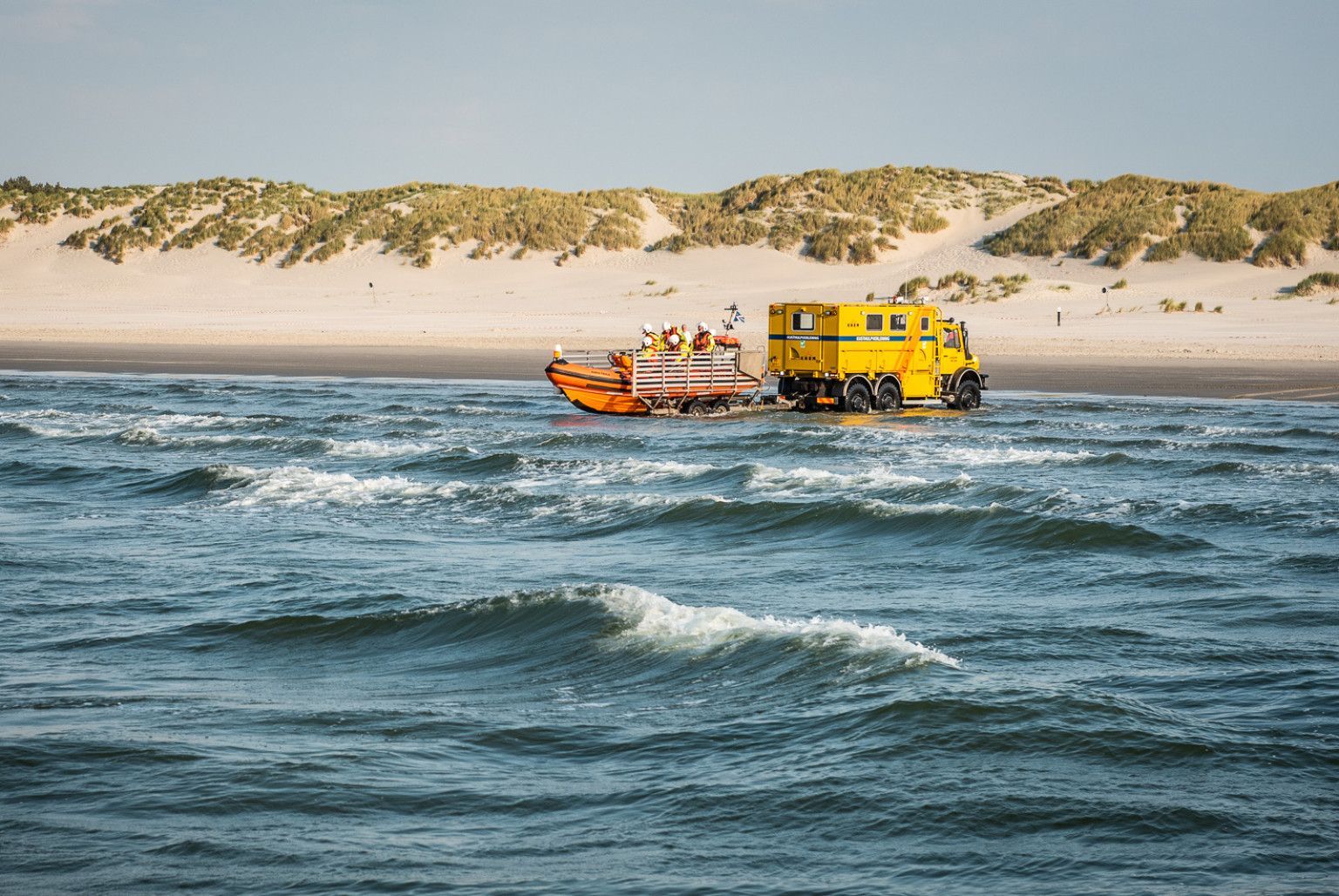
Since 1824, KNRM has been essential to the Netherlands, a country closely linked to water. Fortunately, people can count on professional volunteers who are always ready to help swimmers, water sportsmen, professional sailors and animals in distress. From the beginning, KNRM has operated on three principles: we work without government funding, but with the support of donors. Our rescuers are volunteers and their help is free. This mission has been primal for 200 years.
